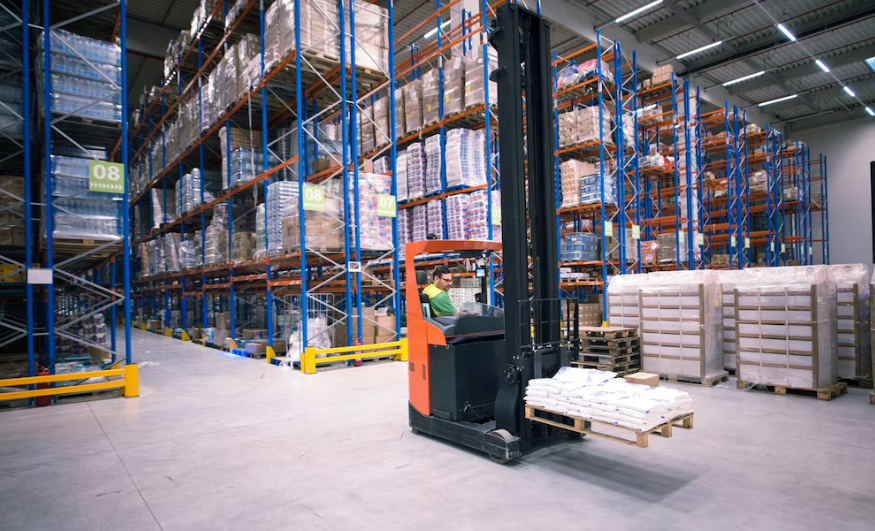Table of Contents
Optimizing Ecommerce Logistics with Strategic Supply Chain Planning
Time: Jul 25,2025 Author: SFC Source: www.sendfromchina.com
In the fast-paced realm of online shopping, the backbone of success isn't just flashy marketing—it’s a solid, data-driven supply chain planning strategy. When done right, this process ensures your ecommerce logistics run like a well-oiled machine: products arrive when customers expect them, freight costs stay in check, and operational glitches are foreseen before they spiral.In this article, we break down the core planning stages—from forecasting demand to handling returns—and reveal how each one fuels better efficiency, cost savings, and customer satisfaction. Whether you're refining your existing process or starting from scratch, this guide transforms theory into practical steps that enhance speed, resilience, and profitability. Let’s roll up our sleeves and optimize your ecommerce logistics from end to end.

1. What Is Supply Chain Planning?
Supply chain planning (SCP) is the strategic orchestration of every step—from raw-material procurement to last-mile delivery—designed to balance supply with anticipated demand in a cost-effective way. It includes forecasting, inventory management, logistics, procurement, and contingency planning. Simply put:SCP ensures “the right product is at the right place at the right time,” minimizing delays, costs, and stockouts.
2. Why Supply Chain Planning Matters for Ecommerce
Global supply chain disruptions cost retailers $1.5 trillion in 2024 alone. With 59% of companies reporting intensified supply chain pressures in 2025, strategic planning transitions from an operational task to a core competitive necessity. Here’s why:
Meet Soaring Customer Expectations
In today’s retail environment, fast, transparent delivery isn’t a perk—it’s an expectation. A smoothly planned supply chain ensures real-time inventory visibility and accurate delivery estimates. According to one study, businesses with high supply chain performance—measured by speed, reliability, and transparency—earn significantly more trust from customers; yet many executives overestimate how reliable their customers perceive them to be by around 20%. Bridging this gap requires robust planning and real-time data sharing across suppliers, carriers, and fulfillment centers.Slash Costs and Boost Operational Efficiency
Optimized supply chain planning enables e-commerce businesses to reduce inventory levels, minimize freight spend, and cut warehousing costs. For instance, using inventory optimization tools, companies have reduced inventory by up to 25% in a single year—while boosting profits and working capital. Meanwhile, integrating AI-powered demand forecasting and transportation systems can deliver dramatic gains in efficiency and cost control—benefits confirmed by both industry benchmarks and real-world implementations.Enhance Customer Satisfaction & Loyalty
Reliable delivery, fewer errors in fulfillment, and hassle-free returns don’t just please customers—they keep them coming back. Research shows clear links between supply chain efficiency, delivery performance, and customer satisfaction. As RapidShyp puts it: “It’s not just about delivering goods—it’s about enhancing the customer experience through real-time tracking, faster shipping, and hassle-free returns”. In short, SCP directly feeds into positive reviews and repeat business.Build Resiliency Against Disruptions
Global uncertainties—port delays, carrier shortages, natural disasters—can severely disrupt ecommerce if supply chains aren’t built to adapt. Planning helps mitigate these risks through multiple levers like safety stock, secondary sourcing, and flexible logistics routing. By proactively preparing for such events, brands protect revenue and customer trust.Guide Data-Driven Decisions Across Functions
At its core, supply chain planning is a decision support framework, merging data from demand forecasts, supplier lead times, inventory levels, shipping routes, and returns. This holistic view empowers smarter decisions: when to reorder stock, which carriers to engage, or when to scale operations. A NetSuite whitepaper explains how supply chain planning “helps businesses meet customer demand in the most efficient way possible” by integrating forecasting, pricing, and inventory control.Enable Scalability & Strategic Growth
Without sustainable planning frameworks, scaling is chaotic and costly. Well-crafted supply chains support growth—whether you're launching new SKUs, adding geographies, or weathering seasonal spikes. Inputs like modular warehousing, demand sensing, and collaboration with third-party logistics providers (3PLs) make expansion manageable and efficient.3. Supply Chain Planning Processes
Supply chain planning in ecommerce is a multi-faceted journey that ensures optimal flow from suppliers to customers. Each process stage is interconnected, with efficiency in one driving performance in the next. Here’s a detailed look at the core planning processes and how they operate in an ecommerce context:
Demand Forecasting & Planning
This is the foundation of any supply chain plan. By analyzing historical sales, promotions, market trends, and external influences, businesses predict future product demand. Collaborative Planning, Forecasting & Replenishment (CPFR) extends this, integrating data across vendors, partners, and logistics networks to synchronize forecasts and orders, enhancing visibility and reducing inventory discrepancies.Why it matters: Accurate demand forecasts reduce the risk of both overstocking and stockouts, improving order fulfillment rates and cutting tied-up capital.
Supply & Procurement Planning
Next, organizations balance forecasted demand with sourcing capabilities. This involves supplier selection, contract negotiation, lead-time assessment, and risk evaluation, with Supplier Relationship Management (SRM) playing a key role in maintaining valuable partnerships.Why it matters: A reliable and agile supplier base ensures orders are fulfilled promptly and flexibly, even during disruptions.
Production & Inventory Planning
In cases of in-house production, the planning extends to production scheduling aligned with forecasts and inventory levels. Even without manufacturing, inventory optimization is essential. Multi-echelon inventory planning balances stock across several locations using data analytics to optimize buffers and lower holding costs.Why it matters: This ensures products are held in the right quantity and location, reducing logistics expenses while maintaining service levels.
Sales & Operations Planning (S&OP)
S&OP is where all functions—sales, finance, production, procurement—align. This rolling, periodic process reconciles demand and supply plans, ensuring strategic objectives, budgets, and operations are in sync.Why it matters: It drives cross-functional accountability, making sure the supply chain plan reflects both market demand and internal constraints.
Distribution & Transportation Planning
This step determines how goods move from production or warehouses to customers. Distribution Resource Planning (DRP) calculates time-phased inventory needs across locations, while Transportation Management Systems (TMS) optimize carrier selection, routes, and load consolidation.Why it matters: Efficient routing and shipment planning significantly cut costs and lead times, especially in the expensive last-mile segment.
Warehouse Management & Order Fulfillment
Strategic warehouse layout and automation are managed through Warehouse Management Systems (WMS) and Warehouse Execution Systems (WES). These systems optimize picking paths, staffing, and throughput, and ensure orders are accurately packed and dispatched.Why it matters: Effective warehousing boosts shipping speed, accuracy, and cost-efficiency in fulfillment.
Last-Mile & Delivery Optimization
The last-mile delivery leg often incurs the highest costs—up to 41% of logistics spend. Here, AI-driven tools dynamically route deliveries, manage real-time traffic, and anticipate bottlenecks.Why it matters: Optimizing this stage directly improves customer satisfaction, reduces fuel and labor costs, and mitigates delivery failures.
Reverse Logistics & Returns
Returns are a critical part of ecommerce logistics. Inbound processes for returned goods include inspection, refurbishment, restocking, or disposal, all ideally pre-planned to streamline workflow.Why it matters: A well-managed returns process minimizes cost and recovers value, while supporting positive customer experiences.
4. Benefits of a Well-planned Supply Chain
When your ecommerce operation builds a robust, end-to-end supply chain plan, the gains ripple across every level of the business:
Significant Cost Reductions
A strategic supply chain dramatically drives down costs in several ways:- Optimized inventory levels: Companies using inventory optimization have slashed stock by up to 25% in just a year—improving cash flow by over 50% within two years.
- Lean operations: Efficient supply chain management minimizes handling, waste, and redundant transports, directly improving the bottom line.
- Direct sourcing gains: Firms like Walmart cut costs by 5–15% through direct supplier relationships, saving billions annually.
Enhanced Operational Efficiency
Efficiency boosts come from removing friction across logistics:- Streamlined logistics & distribution: Leveraging TMS and WMS cuts down delays, reduces errors, and increases throughput.
- Automation & visibility: Real-time tracking systems and integrated software reduce manual oversight and help prevent lost inventory.
- End-to-end coordination: Shared data across forecasting, sourcing, and order fulfillment ensures each step aligns with demand expectations.
Improved Customer Satisfaction & Loyalty
A smooth chain binds customer confidence:- Faster deliveries: With optimized distribution hubs and route planning, 90% of customers now expect delivery within 2–3 days.
- Proactive communication: Supply-chain visibility tools empower brands to update customers ahead of disruptions, bolstering trust.
- Seamless returns: Structured reverse logistics fosters hassle-free returns, reducing friction and supporting repurchases.
Greater Agility and Risk Resilience
Meticulously built chains are far less brittle:- Flexible sourcing & inventory: Multi-echelon systems and safety stocks let businesses quickly reroute or substitute inventory during disruptions.
- Early-warning analytics: Data-driven SCM spots anomalies (port backlog, supply delays) early, enabling proactive pivots.
- Sustainability focus: Environmentally-aware planning also builds resilience, aligning long-term operations with consumer expectations.
Scalability & Strategic Growth
A well-defined chain fuels growth and innovation:- Seamless expansion: Reliable logistics infrastructure eases entry into new regions or product lines, without sacrificing service quality.
- Strong supplier relationships: Integrated planning reduces procurement friction and enhances negotiation leverage.
- Competitive advantage: Data-centered—rather than reactive—operations outpace competitors in price, speed, and reliability.
Data-Driven Decision-Making
When systems talk to each other:- Real-time visibility: Organizations gain end-to-end clarity—from inventory levels to delivery status—enabling swift adjustments.
- Analytics-powered forecasting: Predictive tools reduce stockouts by around 35%, enhancing fulfillment accuracy.
- Continuous improvement: Dashboards literacy fosters ongoing tweaks—each cycle incrementally refining speed, cost, and quality.
Sustainability & Ethical Responsibility
Eco-optimized chains are future-ready:- Reduced emissions: Smarter load consolidation and route planning lowers fuel use and shipping-related emissions.
- Sustainable sourcing: Environmental audits and greener procurement support socially responsible goals and growing consumer demand.
- Cost synergy: Sustainability measures often reduce long-run costs (materials, energy)—while building brand equity.
5. How to Optimize Supply Chain Planning
Building a well-planned supply chain is just the beginning—continuous optimization is where real advantage lies. Below are proven strategies, technologies, and frameworks tailored for ecommerce logistics.
Leverage Advanced Forecasting & AI
- AI & Machine Learning: Retail giants like Target and Walmart leverage AI-driven forecasting to proactively predict stockouts and balance regional inventory, significantly improving on-time fulfillment.- Reinforcement Learning (RL): Companies such as Amazon and UPS have begun using RL algorithms to make supply chains more resilient and dynamically optimize resource allocation under uncertainty.
Tip: Begin with demand forecasting models, then gradually integrate more advanced AI like reinforcement learning to better balance inventory and response strategies.
Choose the Right Technology Stack
- ERP + Specialized Tools: A robust tech stack may include ERP, TMS, WMS/WES, AI-powered visibility platforms, and collaboration tools like CPFR.- Control Tower Visibility: Platforms with control-tower dashboards, GPS tracking, RFID, blockchain, or generative AI provide real-time insights to preempt disruptions.
Tip: Start connecting your central ERP with specialized logistics tools. Gradually layer in visibility modules to shift from reactive to proactive operations.
Strengthen Supplier Collaboration
- CPFR Integration: Collaborative Planning, Forecasting & Replenishment helps harmonize planning across suppliers and partners—minimizing misaligned forecasts and excess inventory.- Supply Chain Collaboration: Regular data exchanges and joint execution across the value chain (not just suppliers but logistics partners too) build systemic alignment.
Tip: Run monthly planning cycles with key vendors. Review forecasts, inventory levels, and lead times together for transparency and trust-building.
Optimize Inventory Strategy
- Multi-echelon Planning: Use multi-location modeling to balance inventory pools across central and regional warehouses, ensuring optimal stock placement.- Buffer & Safety Stock: Use data-driven simulations and AI tools to size buffer stocks according to demand variability and supplier lead times.
Tip: Analyze SKU performance tiers and keep proactive safety stock tools for unpredictable demand items.
Automate Warehouse & Picking Operations
- Smart WMS/WES: Systems that optimize pick-paths, dynamically allocate labor, and support automation increase throughput and accuracy.- Predictive Staffing: Align staffing levels with demand surges and promotions to reduce over- or under-staffing risks.
Tip: Prioritize warehouse automation in regions with high activity—start with pick-to-light systems, scale up with robotic automation.
Optimize Distribution & Last-Mile
- TMS & Route Optimization: TMS platforms can consolidate loads, optimize carrier selection, and fine-tune routes—cutting delivery costs significant.- Dynamic Delivery: AI-powered rerouting, real-time traffic, and ETA adjustment tools are key to last-mile efficiency.
Tip: Test last-mile optimizations in select urban zones, then expand them gradually to broader regions.
Build Resilient Frameworks
- Scenario Planning: Simulate risk events like port delays or supplier disruption and model compensatory logistics paths, routes, or sourcing strategies.- Control Tower & Real-Time Alerts: Use AI platforms capable of generating proactive supply chain signals based on live anomalies.
- Alternative Sourcing: Maintain backup suppliers and multi-country sourcing options, especially during geopolitical or tariff volatility.
Tip: Quarterly “stress test” your supply chain—run what-if scenarios and codify alternate operation playbooks.
Track KPIs and Iterate Continuously
Monitor key performance metrics:- On-Time In-Full (OTIF)
- Inventory Turnover & Stockout Rate
- Freight Cost per Order
- Warehouse Throughput & Order Accuracy
- Return Processing Time
FreightAmigo notes that 79 % of companies that optimize their supply chain report significant revenue gains.
Tip: Build real-time KPI dashboards, automate alerts for threshold breaches, and run monthly reviews to drive incremental improvements.
Adopt Sustainable Packaging & Distribution
- Eco-Packaging: Lightweight and standardized boxes increase vehicle capacity, lower freight costs, and reduce emissions.- Green Logistics: Consolidated deliveries and optimized routes help shrink carbon footprints—adding value to brand sustainability efforts.
Tip: Audit your packaging materials and shipping configurations for density and recyclability, then test greener packaging trials.
Scale Slowly, Learn Fast
- Pilot Programs: Pilot new tech or processes in single regions or product lines before enterprise-wide rollout.- Micro-Innovations: As advised in TechRadar, implement small, high-impact AI enhancements—like demand-sensing modules—before full tech stack upgrades.
- Modular Expansion: Scale distribution centers, automation, and staff in sync with forecasted growth—keeping operating leverage healthy.
Tip: Document wins, challenges, and ROI for each pilot—use lessons learned to build your roadmap.
6. Conclusion
E‑commerce thrives on speed, predictability, and seamlessness—and that depends on solid supply chain planning. Break the chain into forecast, sourcing, inventory, warehousing, shipping, and returns. Apply technology, data, and optimization at each link. The result? Lower costs, happier customers, and a supply chain that adapts rather than reacts.7. FAQs
Q1: What is supply chain planning in ecommerce?
A: It’s the process of forecasting demand and aligning procurement, inventory, warehousing, transport, and returns to efficiently meet customer demand.Q2: What tools support SCP?
A: Technologies like ERP, TMS, WMS, WES, AI/ML forecasting, GPS/RFID tracking, and CPFR platforms.Q3: How can small ecommerce brands optimize SCP?
A: Start with accurate data, invest in low‑cost forecasting tools, partner with 3PLs for warehousing/logistics, and refine routes to cut last‑mile costs.Q4: What are the typical KPIs?
A: Fill rate, inventory turnover, OTIF (On‑Time In‑Full) delivery, freight cost per order, returns rate, and order cycle time.Q5: How do you manage supply chain disruptions?
A: Prepare by diversifying suppliers, using buffer inventory, having alternate shipping routes, and maintaining real-time visibility to react fast. Post Views:916
Post Views:916
Copyright statement: The copyright of this article belongs to the original author. Please indicate the source for reprinting.
Previous Post
Is Dropshipping Still Worth It In 2025? The Ultimate Guide
Next Post
What Is Automated Order Fulfillment? A Complete Guide for 2025
TAGS
Hot Research
Get a Custom China Fulfillment Solution with FREE Storage for 30 Days
 Want to know about our services, fees or receive a custom quote?
Want to know about our services, fees or receive a custom quote?
 Please fill out the form on the right and we will get back to you within a business day.
Please fill out the form on the right and we will get back to you within a business day.
 The more information you provide, the better our initial response
will be.
The more information you provide, the better our initial response
will be.





 TAGS:
TAGS: